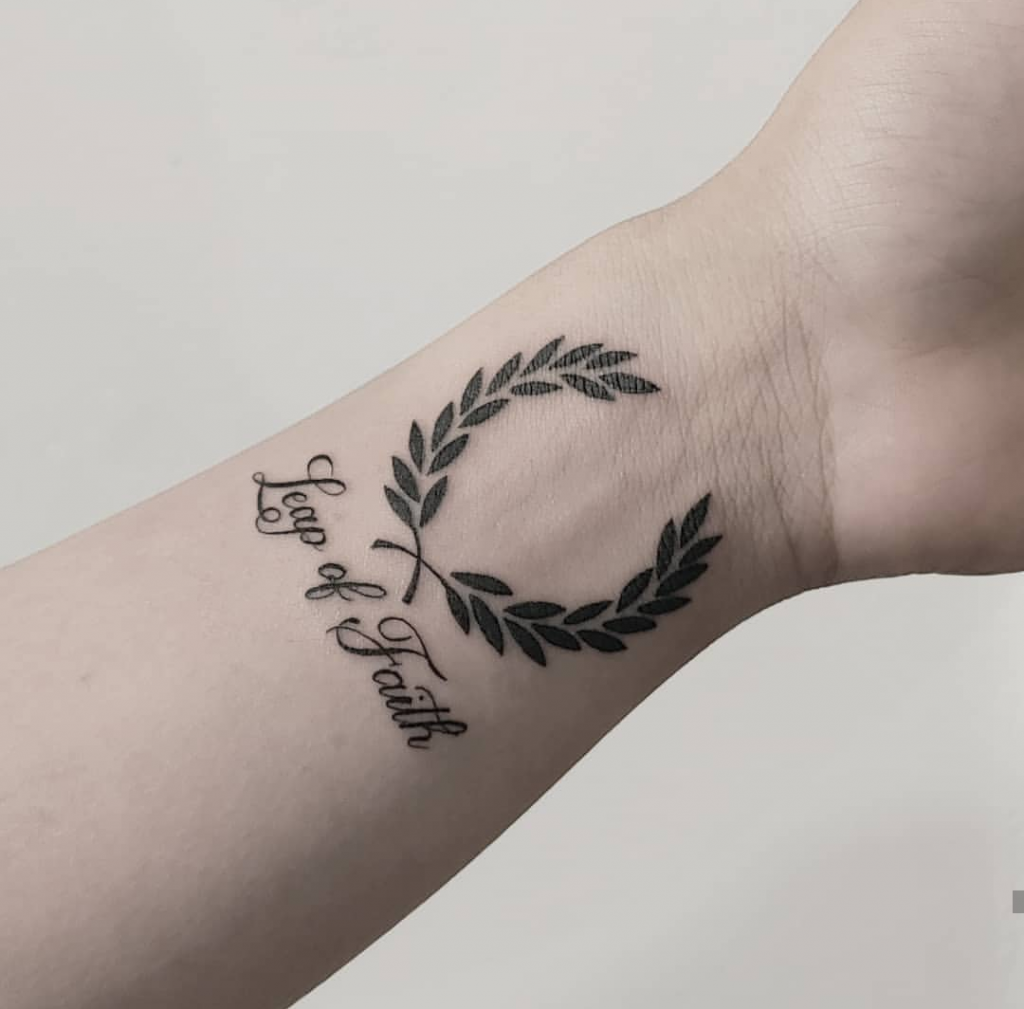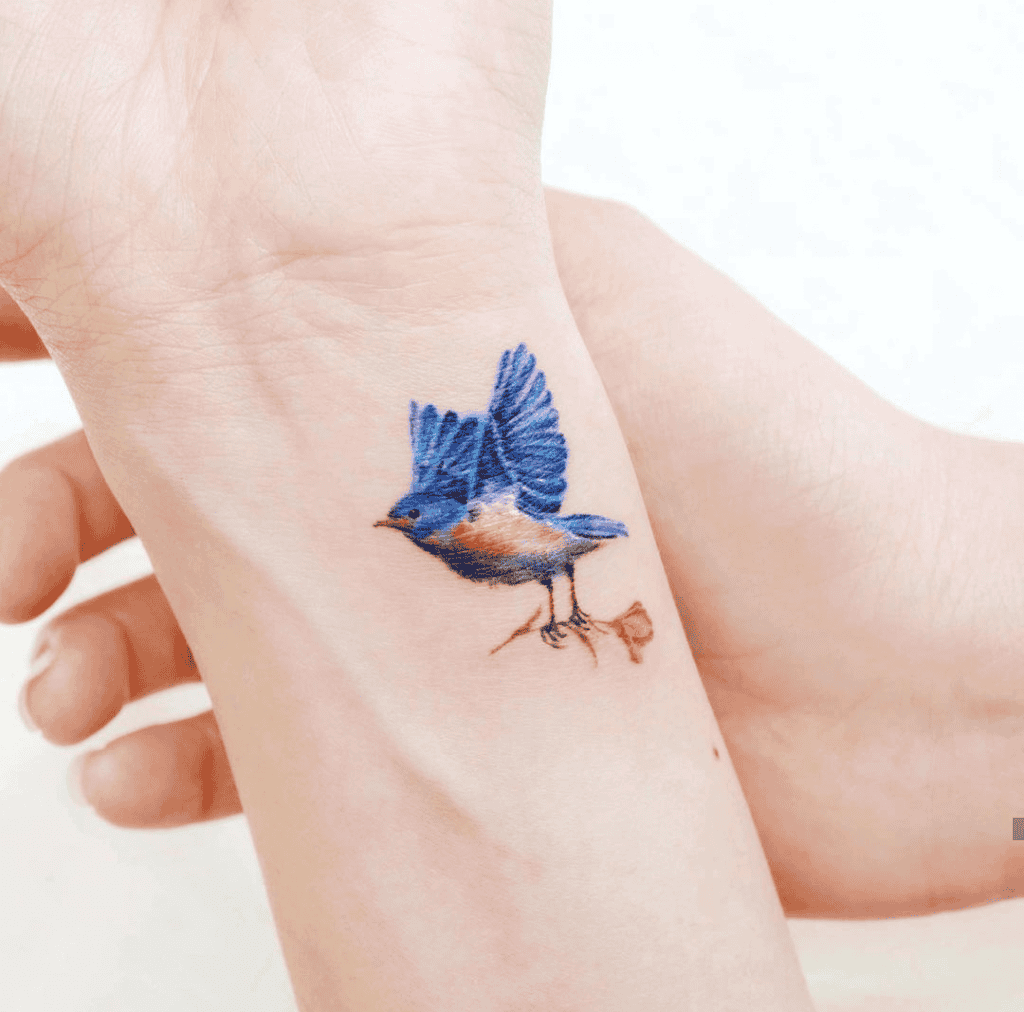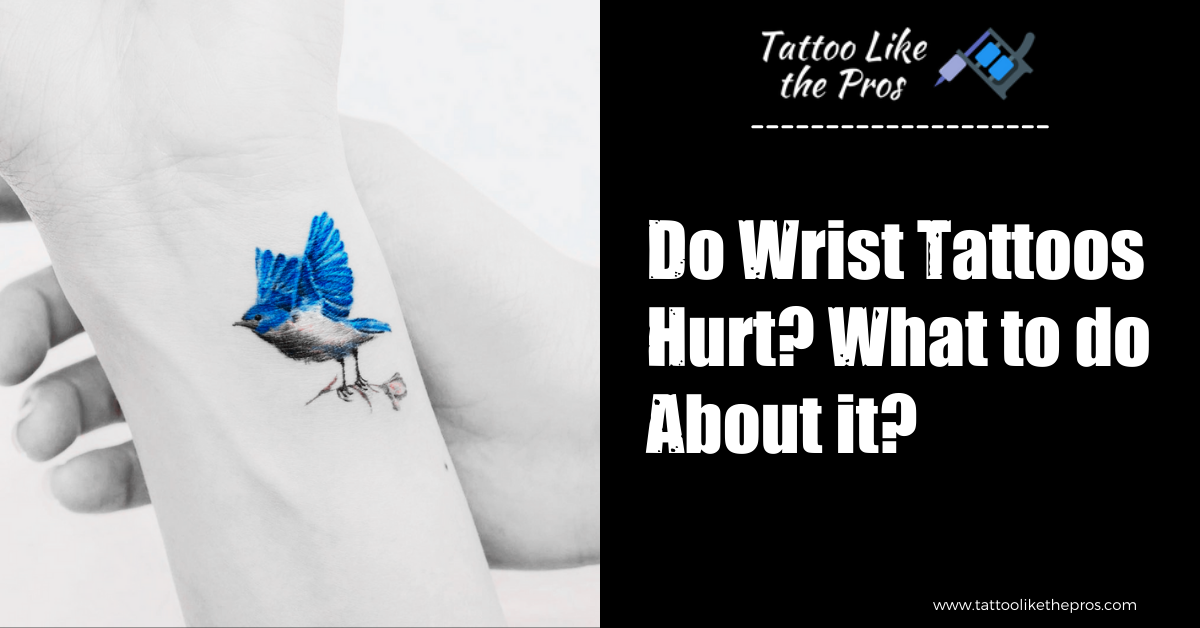One common question is: Do Wrist Tattoos Hurt? All tattoos hurt. Yet, some hurt more than others. The probable cause for the varying levels of pain is the actual placement of the tattoo. Wrist tattoos are known for being high up on the pain scale.
It doesn’t matter if you’re a pro wrestler or an 18+ teen entering your freshman year at college, depending on your pain threshold, you can expect some degree of pain from a wrist tattoo. The good news is, there are a few factors that determine how bad that pain may eventually be.
If you want that pain to be minimized, you’ve landed on the right page. In this guide, you’ll learn everything about the pain associated with wrist tattoos, including what to do about it.
Why Do Wrist Tattoos Hurt So Much?
Wherever the skin on your body is thin, you’re bound to experience more pain from the needle. The wrist is one of those areas that have very thin skin all around.
This means, in most areas of your wrist, the tattooing needle requires minimal effort to reach the bone level. The vibrating feeling can be quite uncomfortable once the needle hits close to the wrist bone, which is when you experience “more pain.”
When we say “more pain,” it’s the sharp, intense pain from puncturing extremely thin skin, in addition to the regular pain associated with tattooing. As we popularly know, regular pain is the burning and itching discomfort that comes with being tattooed on all types of skin and placement areas.

Placement & Pain Spots Around The Wrist
Looking to get inked somewhere in the wrist region? It helps to know about the varying pain spots in what’s already considered a sensitive placement area. Around your wrist, there are areas that tend to hurt more than others. These are areas having relatively less flesh and more nerves and bone.
Pain intensity is multifold at the part of the inner wrist next to the palm. Also, a tattoo placed over the wrist bone on the outer section of your wrist is bound to be quite painful.
In the inner wrist, the palmar cutaneous branch is close by. That branch is a nerve that extends from the palm’s median nerve. These nerves are sensitive to pain because of their role in the anatomy to send signals between the central nervous system and your palm.
A tattoo placed on your outer wrist can be quite painful due to its proximity to the ‘ulna’ (a.k.a wrist bone). During the tattooing process, the needle causes vibration-linked pain over the ulna. This isn’t the most intense of pains, yet it’s not slight by any measure either. This vibrating pain differs among different people. Generally, those with less fat over the bone shall have to bear great vibrating pain.
Finally, we have to consider the sides of the wrist. While getting tattooed, these sections of your wrist aren’t as painful as the inner wrist. In essence, the more you move onwards towards the forearm, the lesser the pain will be. The pain will be greater where the skin is thinner or there is a more prominent bony area. Further, the tattoo will be less painful if the amount of fat and underlying tissue are more.
Common Wrist Tattoo Placements & Associated Pain
Want to know exactly what a wrist tattoo will feel like? Outlined below is an overview of the different pain spots around the wrist.
Inner Wrist Tattoo Placement:

This is the most painful tattoo placement around the wrist. The skin around this area is supersoft and sensitive. Also, as mentioned earlier, there are more nerves running through here than through the outsides of the wrist. However, the intense pain will be manageable due to the small surface area of the inner wrist. You can easily mentally prepare yourself for a relatively short duration of intense, deep pain.
Outer Wrist Tattoo Placement

For the most part, this isn’t a very painful area. The discomfort, however, arises once the tattoo needle starts hitting the small yet bony lumps.
Sides Of Wrist Tattoo Placement

Like the outer wrist, the sides too have bony lumps. These bony areas will noticeably hurt once the needle hits.
Duration Of The Pain
For the most part, the pain lasts till the tattoo session ends. Having said that, the duration of pain from a wrist tattoo depends on the type and size of the wrist tattoo, its placement, and the tattoo artist.
Suppose the tattoo artist is doing a fine linework design with a single, fine needle. In that case, the session is likely to be quicker. On the other hand, if the artist is doing solid or colorful work involving rigorous back and forth needling for the filling, it ought to hurt more.
After the tattoo session has ended, the needling pain instantly ends. However, regular tattoo healing and its associated pain (burning and scratching) last up to 2 weeks, which holds for any tattoo be it wrist, chest, forearm, or at any other placement.
Once a tattoo heals, the healing discomforts usually completely subside, unless there’s an infection or allergic reaction that has arisen. If the latter happens, accordingly a doctor should be consulted.
Tips For Minimizing Wrist Tattoo Pain
There are some steps you can follow to reduce and minimize the pain from a wrist tattoo. The tips outlined below will help relieve your pain both during and post the tattoo session.
Select A Professional Tattoo Artist
A professional tattoo artist would have the expertise to work gently around sensitive skin. Moreover, an expert would possess the skill to finish the tattoo faster, hence there will be a lower duration of pain. You need to avoid rough, heavy-handed artists around such a sensitive body part.
As an additional tip, you need to ensure no pain medications are consumed 24 hours before your session. Bleeding can result as the blood thins due to pain medications.
Go With A Simple, Small Tattoo Design
Going with a small and simple design means the tattoo will be applied quicker. A less intricate design requires a faster session, which as we know it, means less time suffering from pain. Also, since simple designs require fine single needle protrusion, there will be no intense back and forth filling action that causes more pain.
Avoid Drinking Alcohol Before Your Appointment
Drinking alcohol is a likely way of leading to dehydration. Not just that, alcohol can drastically heighten the pain sensitivity and even increase bleeding. Proper hydration is essential. Instead of drinking alcohol, you should drink enough water before your appointment and even sip some during the session.
De-stress In Advance
It’s well-known that stress escalates pain sensitivity. Before arriving at your appointment, it’s recommended to de-stress through effective relaxation techniques like yoga, exercising, unwinding through meditation, or doing any of your other favorite relaxation activities.
Have A Light Meal And Go
Going to your appointment with an empty stomach isn’t such a bright idea. Imagine feeling hungry in the middle of your tattoo session. To avoid such an eventuality, it’s wise to have a light meal beforehand. This will help your pain sensitivity and prevent feeling dizzy during the process.
Take Short Breaks Between Your Tattoo Session
It makes sense to take short breaks, especially if the pain is unbearable. Moreover, this way you could avoid accidental jerks of your hand during spurts of sudden pain. Also, it’s a wonderful idea to listen to music or do small talk with your tattooist or a friend during the session. This is a way of distracting yourself from the pain.
Apply The Best Tattoo Numbing Spray Or Cream
If your pain threshold is at the lowest end of the spectrum, you may want to resort to applying a recommended numbing product to your wrist. Typically, these products (tattoo numbing creams and sprays) are used for numbing the area to be tattooed before and at the beginning of the session. The important thing is to properly follow the instructions supplied with the product.
Follow The Proper Tattoo Aftercare Regime
Once you’re done getting the tattoo that’s just half the battle. The rest is ensuring you give it the best aftercare during and after the healing process. Adequate aftercare is critical if you want to see your tattoo look its shiny best and avoid all infection and allergic reactions.
You Have A Problem, If…
We’ve already established above that it takes up to 2 weeks for a new tattoo to heal. During that healing period, there’s a soreness, itching, crusting, and burning that varies according to the individual and the design. However, the pain gradually subsides each passing day of the healing period.
Yet, any level of discomfort in excess of that could be a sign of a more serious problem, like a skin infection or an allergic reaction.
In the event such a problem arises, you’ll need to notify your doctor of any of the following symptoms you may have noticed:
- Escalating pain
- Fever
- Aching joints and muscles
- Open sores
- Swelling at the tattoo area
- Severe rashes/blisters at the tattoo area
- Severe redness from the tattoo
- Smelly discharge from the tattoo
Taking Care Of Your Wrist Tattoo
We’ve already given the straightforward answer to the popular question: Do wrist tattoos hurt? Yet, what about the care for a tattoo in this sensitive placement. It’s a vulnerable location that requires adequate care just like the special care while tattooing it.
The hands are prone to high exposure and usage daily. The wrists are in a way a crucial link to the hands and are equally prone to bumps and scrapes. You’ll always have to watch not scraping or clashing your wrist tattoo against rough or sharp objects. This especially holds during the crucial healing process.
The wrist is a joint. Tattoos in joints take relatively longer to fully heal. You should keep the wrist area as still and relaxed as possible during the healing period.
A proper moisturizing regime should also be followed, beginning when the tattoo dries up and begins to scab a few days after the inking session. A recommended tattoo lotion should be used so the tattoo is well hydrated and doesn’t crack upon scabbing. A cracking tattoo can result in ink loss or dispersion.
Conclusion
Like with any tattoo, getting one on a sensitive placement like the wrist would be a lot more bearable if you have it done in a reputable tattoo parlor by an experienced artist.
A tattoo anywhere along the wrist is relatively more painful because of the extremely thin skin and parts of bony bumps around the wrist. On the bright side, the surface area of the wrist is small, meaning a faster, more bearable tattoo session.
Wrist tattoo pain is relatively higher than that of other body parts. Nevertheless, it isn’t unbearable or too painful to skip your wrist from getting tattooed. Luckily, the level of pain also depends on your adherence to the above tips, your pain threshold, and the gentleness of the artist.
